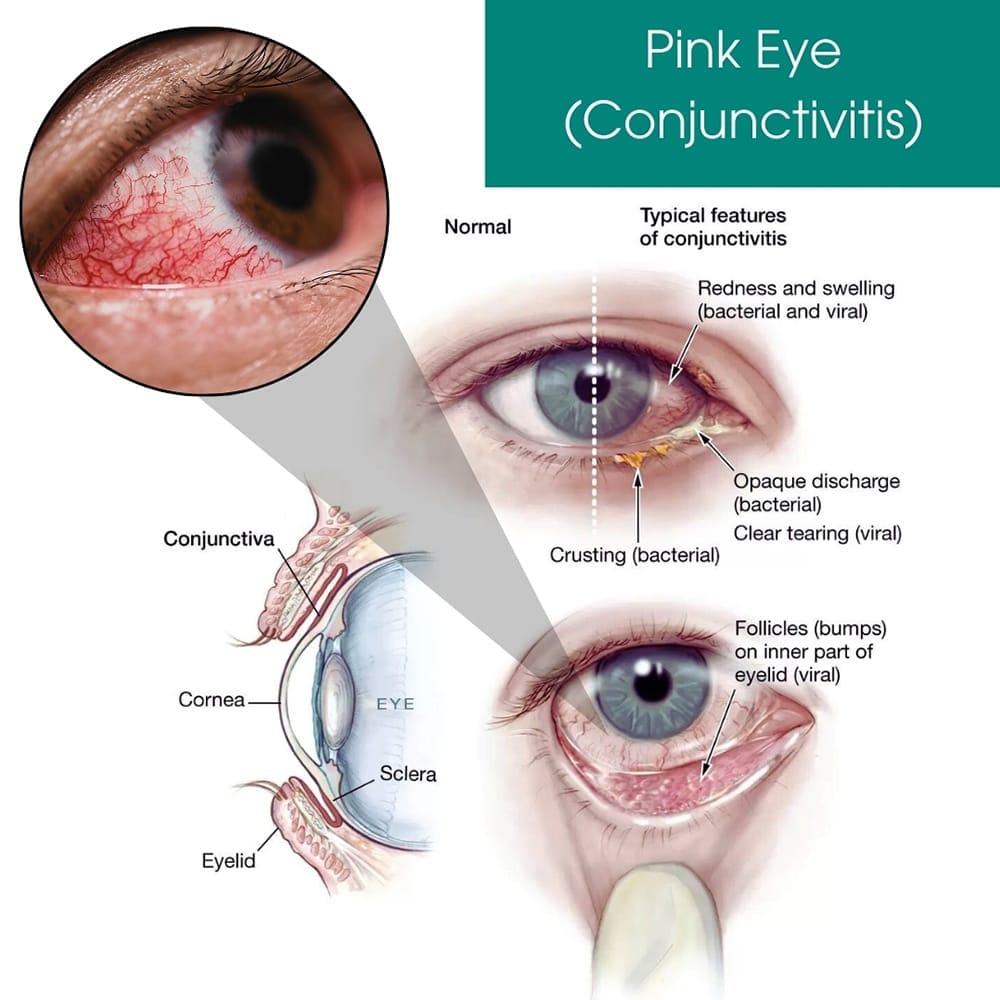 Pink eye, also known as conjunctivitis, is an inflammation of the conjunctiva, which is a thin, translucent tissue that borders the inside of the eyelid and covers the white of the eye. You can get pink eye in one or both eyes. Pink eye is one of the most prevalent eye infections among children and adults, as every year, around six million cases of conjunctivitis occur in the U.S.
Pink eye, also known as conjunctivitis, is an inflammation of the conjunctiva, which is a thin, translucent tissue that borders the inside of the eyelid and covers the white of the eye. You can get pink eye in one or both eyes. Pink eye is one of the most prevalent eye infections among children and adults, as every year, around six million cases of conjunctivitis occur in the U.S.
People sometimes mistake pink eye for another condition called stye, as the symptoms can be similar, which is why it’s vital that you find an eye doctor who knows how to treat pink eye effectively and diagnose it properly. Top-rated optometrist at Eye Physicians in New York City, known for their experience and round-the-clock care, specialize in eye issues and offer comprehensive eye care for treating pink eye and other conditions, such as:
Pink eye can manifest with various symptoms. It’s important to treat eye infections in a timely manner to prevent further complications and to stop the spread of the disease.
The most common symptoms include:
Most pink eye cases appear with these common symptoms and frequently resolve independently or with minor treatment. However, problems or new symptoms may occur in some cases, particularly if the infection is severe or the root cause of the disease is serious.
New symptoms that require treatment for pink eye by your NYC doctor as soon as possible include:
Pink eye symptoms in children are generally similar to those in adults, however, their severity can differ. Children may be more likely to rub their eyes, causing additional irritation. Plus, they may be fussy or express their pain more directly. When considering pink eye treatment for kids, it’s important to first see a pediatric eye doctor like you find at NYC-based Eye Physicians who is familiar with children’s issues and offers the best conjunctivitis treatment for kids.
Identifying the causes of conjunctivitis is extremely important to develop the best conjunctivitis treatments.
Conjunctivitis can develop in newborns following childbirth as a result of bacterial or viral infections, and can be caused by a variety of other factors, the most common of which include:
Pink eye is very contagious and easily spreads from person to person. Bacterial pink eye is contagious for 24 to 48 hours after taking antibiotics and viral pink eye spreads for as long as the symptoms last, and it can be contagious even before symptoms appear.
The most typical ways it spreads include:
If your doctor suspects bacterial involvement or the pink eye infection is serious, they may suggest testing. They use a soft swab to collect fluids from around your eye and send the sample to a laboratory. The laboratory runs tests to determine the exact cause of your pink eye.
Treatment for pink eye is primarily determined by the underlying cause, however, your optometrist develops your pink eye treatment plan with the diagnosis in mind, which typically includes taking into account your symptoms and medical history, such as recent infections, allergies, eye irritants, sexually transmitted infections or a family history of autoimmune illnesses.
General treatment options include:
Newborns can acquire a dangerous type of pink eye that can result in vision loss. In hospitals in the United States, it’s routine practice to apply an antibiotic ointment to each newborn’s eyes.
Other pink eye prevention involves tasks such as:
Contact Eye Physicians in New York City, the ideal eye doctor in Downtown Manhattan who understands the difficulty of keeping your kids healthy and maintaining regular eye checkup schedule. They provide prompt service and strive to get you in and out of the office in under an hour.
Eye Physicians
110 Lafayette St, Suite 503
New York, NY 10013
(212) 292-4814
Entrust the care of your precious eyesight to highly skilled and experienced eye care professionals. For top-notch ophthalmologists and optometrists in Downtown Manhattan, choose Eye Physicians. Eye Physicians ensures prompt care, precise diagnosis, and personalized treatment plans.
Schedule an Appointment